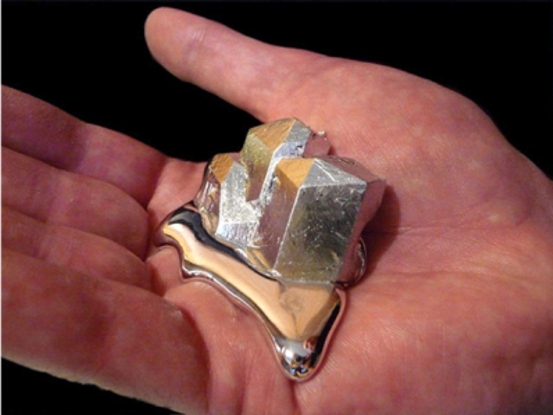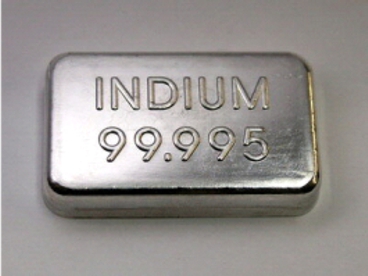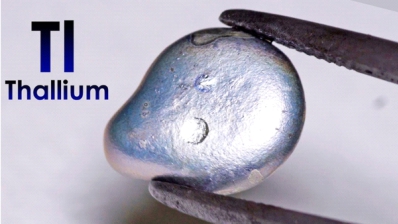The Boron Group – Gallium, Indium and Thallium
The boron group comprises boron, aluminium, gallium, indium and thallium. Read about boron here and aluminium here.
Gallium
Gallium has a low melting point (29.7 C) but a very high boiling point (2,204 C), one of the greatest ranges of any element. The low melting point causes gallium to melt in your hand.
About 95% of gallium is used in electronics, mostly in the form of the semiconductor gallium arsenide. It is used in integrated circuits such as microwave and infrared circuits and in solar panels. Gallium nitride is also a semiconductor used in mobile phones and pressure sensors.
Gallium occurs in small amounts, around 50ppm in aluminium ores such as gibbsite (Al(OH)3) and up to 100ppm in zinc ores such as sphalerite ((Zn,Fe)S). The US Geological Survey estimates that there are over a billion kilograms of gallium resources in bauxite.
World production in 2019 was estimated at 320,000 kg, mostly from China. High purity (+99.9999%) gallium sold for USD570/kg in 2019 and low purity (+99.99%) for USD150/kg.
Indium
Indium melts at 156C and boils at 2,000C. It is a soft, malleable silvery white metal that produces a “tin cry” when bent. This is a type of crackling sound made when tin and some other metals are bent.
Most indium consumption is as indium tin oxide (ITO). ITO can form a thin, transparent, electrically conductive film. It is used in LCDs, flat panel displays, touch screens and solar panels. Windshields coated with ITO can be de-iced and de-misted. Indium, in compounds such as indium arsenide, is increasingly being used in semiconductors, which are mostly used in photovoltaic cells.
Indium is typically recovered from sphalerite, at concentrations of 1-100ppm. If the zinc refinery doesn’t produce indium, the slimes are shipped a refinery that can refine indium. About 30-40 companies produce refined indium, alloys and compounds.
World production of indium in 2019 was 760t, 300t of which was produced by China. South Korea, Japan and Canada are also significant producers.The price for 99.99% indium was USD390/kg in 50kg lots.
Thallium
Thallium has a melting point of 302C and boiling point of 1457C. It is a blue white metal that is soft enough to cut with a knife. It reacts with acids and with oxygen in the air to form a coating of thallium oxide (Tl2O). Thallium and its compounds are very toxic and thus are strictly controlled. In fact thallium is the most toxic of all metals.
Thallium is a by-product of zinc, copper and lead refining. It is mostly used in the form of thallium sulphide (Tl2S) in photoelectric cells.
The thallium market is small, production in 2019 was estimated to be 8,000kg. Its use is restricted because of its high price, USD7,600/kg in 2019, and toxicity.
In Australia
Australian exposure to the boron group elements is largely as a by-product of base metal mining. Gallium can also be enriched in some coal deposits, but I do not have any data for Australian coal deposits.



